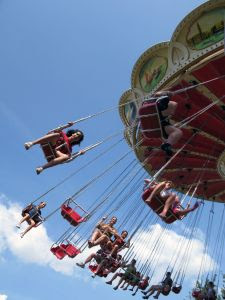 I’ve written before about the importance of play for kids. But it wasn’t until recently (after writing more about creativity and kids!) that I realized how integral play is for adults.
I’ve written before about the importance of play for kids. But it wasn’t until recently (after writing more about creativity and kids!) that I realized how integral play is for adults.
Reflecting on my own busy summer, I noticed how little of it I spent just playing. Remember when you were in school and you couldn’t wait for summer so you could play outside all day and into the evening?
Then you grew up and your life became over scheduled and there was little time left for play, even in the summer!
There is still time to add a little play time into your life. Even as summer comes to an end, find ways to look at life like a child:
- Get sidewalk chalk and color to your heart’s content
- Find a swing and soar to new heights
- Spend an afternoon blowing bubbles
- What will you do to play like a kid?





